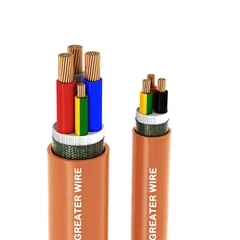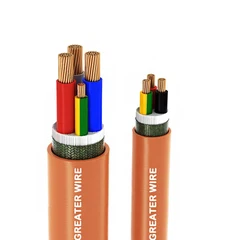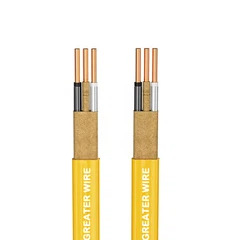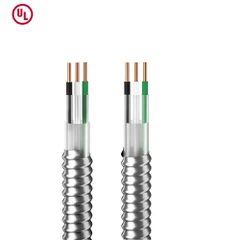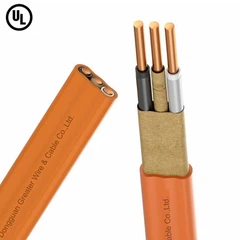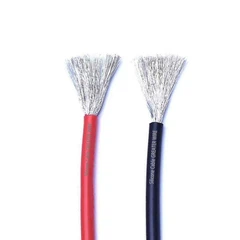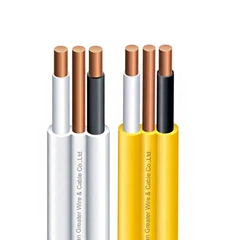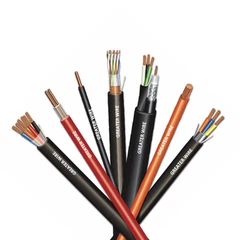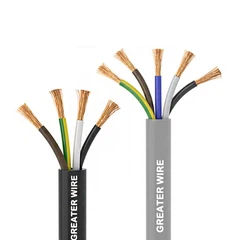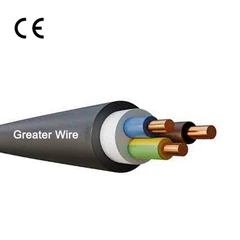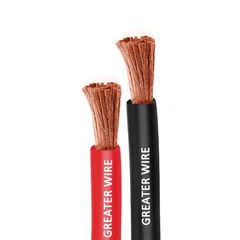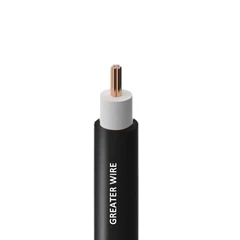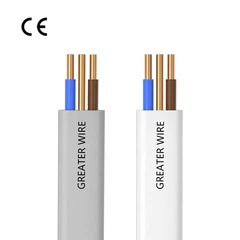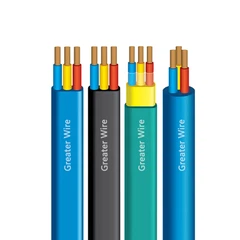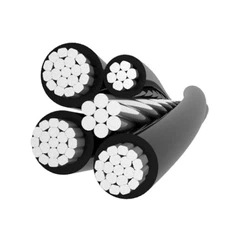The PV1-F cable is a high-quality, durable, and flexible cable specifically designed for use in solar power systems. It is commonly referred to as a solar cable or solar wire due to its unique properties, which make it well-suited for the challenges faced by photovoltaic (PV) installations. This article will explore the main application areas of the PV1-F cable, its key specifications, and why it is a preferred choice for various components within a solar energy system.
1. Introduction to PV1-F Cable
The PV1-F cable is a single-core cable with specialized insulation and sheathing, designed to withstand the specific demands of solar power systems. The cable is primarily used for direct current (DC) circuits within photovoltaic installations, connecting the solar panels to inverters and other components of the system.
The cable is often chosen for its flexibility, UV resistance, high temperature tolerance, and durability. It is designed to handle the electrical and environmental challenges that solar energy systems face, including exposure to sunlight, moisture, and extreme temperatures.

2. Key Specifications of PV1-F Cable
Before delving into the application areas of the PV1-F cable, it is essential to understand its key specifications, which contribute to its suitability for use in solar energy systems.
2.1 Voltage Rating
The PV1-F cable is designed to handle up to 1,000 V DC, which is the standard voltage for most solar panels and solar inverters. This voltage rating ensures the cable can transmit electrical energy efficiently and safely within the solar system.
2.2 Temperature Resistance
The PV1-F cable is designed to perform in a wide temperature range, typically from -40°C to 90°C. This allows it to function in extreme weather conditions, from freezing cold to intense heat, without compromising its performance.
2.3 UV Resistance
The PV1-F cable is UV-resistant, meaning it is capable of withstanding prolonged exposure to sunlight without deteriorating. This is crucial for outdoor applications where solar cables are exposed to the sun for extended periods.
2.4 Mechanical Properties
The cable is also designed to be highly resistant to mechanical stress, such as abrasion and tension. Its flexibility ensures ease of installation and reduces the likelihood of damage during routine maintenance or while being routed through challenging installations.
2.5 Fire Resistance
The PV1-F cable often comes with fire-retardant properties to minimize the spread of fire in case of an electrical fault. This is essential for ensuring safety in solar installations.

3. Main Application Areas of PV1-F Cable
The PV1-F cable has a broad range of applications within solar energy systems. Below are the most common areas where this cable is used:
3.1 Connecting Solar Panels to Inverters
One of the primary applications of the PV1-F cable is in the connection between solar panels and solar inverters. The cable carries the DC electricity generated by the solar panels to the inverter, where it is converted into alternating current (AC) for use in homes, businesses, or for feeding into the grid.
This connection is critical because the PV1-F cable ensures that the solar wire can withstand the high voltage generated by the panels, typically ranging from 300V to 600V for individual solar modules, and up to 1,000V DC for strings of panels.
3.2 Connecting Solar Panel Strings and Arrays
In larger solar installations, multiple solar panels are connected together to form strings or arrays. The PV1-F cable is used to interconnect these strings, allowing them to work as a unified system. By connecting the solar panels in series or parallel, the system can achieve the desired voltage and current output.
The PV1-F cable is an ideal choice for these connections due to its high voltage rating (up to 1,000V DC), UV resistance, and mechanical properties, ensuring that the entire solar array operates reliably over time.
3.3 DC Circuit Wiring in Solar Power Systems
The PV1-F cable is commonly used for DC circuit wiring in solar systems. These circuits are responsible for carrying the electricity generated by solar panels to the inverter or other components, such as charge controllers or battery storage systems. The cable ensures that the electrical energy is safely transmitted within the system.
This wiring includes the connections between the solar panels, solar charge controllers, and batteries, ensuring that power is stored efficiently and safely. The PV1-F cable is well-suited for this application due to its ability to handle the demanding conditions of a DC circuit, including the need for high voltage resistance and long-term durability.
3.4 Solar Roof and Ground-Mounted Installations
The PV1-F cable is widely used in both roof-mounted and ground-mounted solar installations. In roof-mounted systems, the cable is typically run along the roof, connecting the solar panels to the inverter. It is routed through conduits, around obstacles, and across rooftops, where it is exposed to various environmental challenges, such as extreme temperatures and sunlight.
In ground-mounted systems, the PV1-F cable is used to connect the solar panels installed on the ground to the inverter and the electrical grid. These installations are often larger in scale and may involve running cables over long distances, requiring high-performance cables like the PV1-F to ensure reliable transmission of power.
3.5 Interconnecting Solar Power Systems
In larger-scale solar installations, such as solar farms or commercial rooftop installations, multiple solar systems are often interconnected to increase the total capacity. The PV1-F cable is used to connect various sections of these systems, ensuring that they work in tandem to produce optimal power.
These interconnections can span long distances, often in open fields or large rooftop areas, where the cable is exposed to environmental conditions like UV radiation, wind, rain, and extreme temperatures. The PV1-F cable is ideally suited for these conditions, offering protection against mechanical damage, water ingress, and temperature extremes.
3.6 Solar Battery Storage Systems
In off-grid or hybrid solar systems, solar battery storage plays a crucial role in storing excess energy produced by the solar panels. The PV1-F cable is used to connect the solar panels to the charge controller and the batteries. It also carries the DC electricity from the batteries to the inverter when needed.
Because battery storage systems require reliable, long-term connections, the PV1-F cable is the preferred choice for its durability, flexibility, and ability to handle the high-voltage requirements of such systems.
3.7 Integrating Solar Systems with Electrical Grids
In grid-connected solar systems, the PV1-F cable is used to interconnect the solar panels with the grid-tie inverter and the electricity grid. These systems require highly reliable, long-lasting cables to ensure that the electricity produced by the solar panels is efficiently converted and fed into the grid.
The PV1-F cable is ideal for this application because of its high voltage resistance, UV protection, and mechanical durability. It ensures that the system remains operational for the long term, allowing solar energy to be fed into the grid safely and effectively.

4. Advantages of PV1-F Cable in Solar Installations
There are several advantages of using PV1-F cable in solar installations:
4.1 High Voltage Handling
The PV1-F cable is rated for up to 1,000V DC, making it suitable for most solar power systems, including residential, commercial, and industrial installations. Its ability to handle high voltages ensures that it can efficiently transmit power without risk of failure.
4.2 UV and Weather Resistance
The cable's UV-resistant insulation protects it from degradation caused by prolonged exposure to sunlight. Additionally, it is designed to withstand harsh weather conditions, such as rain, snow, and extreme temperatures, making it perfect for both roof-mounted and ground-mounted installations.
4.3 Flexibility and Ease of Installation
The PV1-F cable is flexible, making it easy to install in a variety of configurations. Its flexibility is particularly beneficial when running cables along rooftops, through conduits, or in complex solar system layouts.
4.4 Longevity
Due to its durable construction and resistance to environmental factors, the PV1-F cable has a long lifespan, typically lasting for 25 years or more in solar installations. This longevity reduces the need for frequent maintenance or cable replacements, improving the overall cost-effectiveness of the solar system.
4.5 Safety
The PV1-F cable is designed with fire-resistant properties and ensures safe operation in solar energy systems. It also minimizes the risk of electrical faults, ensuring that the system runs efficiently and safely.

